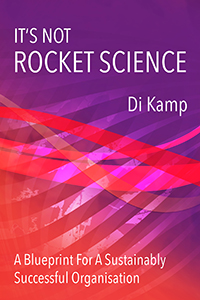When we are young, we are greatly influenced by our role models. As children, we learn to mimic our parents at a very young age and, in later years, whilst our role models may change, we continue to learn from those we admire. These will include our heroes, whether fictional or real, and those at school who may be brighter, better at sports than we are, or those who are the most popular.
Whilst our tastes may change, as we grow older, the desire to learn from and emulate others does not diminish. At work, we try and understand what makes people successful and recognise the behaviours of the most influential. Our own leadership styles are more likely to reflect what we have picked up from others than what we may have learnt from our own experiences.
Before we notice, others are watching us closely and seeing what works and what they like. And if what we do does not seem to match what we say, we build suspicion, distrust and potentially lose others’ commitment to our leadership.
So I would like you to think about the behaviours that you demonstrate at work. Do these reflect the ways of working that you are trying to encourage or are there inconsistencies? For example, are you trying to encourage others to have a better work/life balance, but are the first to arrive and the last to leave? Or are you trying to improve team working within your department, whilst being openly proud of your independence and autonomy of decision-making?
We are often unaware of these inconsistencies between what we say and what we do, but they are glaringly apparent to others. So, ask yourself some key questions:
- What are the behaviours and ways of working that you are trying to promote within your team or department?
- How consistent are your own actions in demonstrating these changes?
- What improvements or changes in your leadership style do you need to make to ensure that there is greater consistency?
Finally, why not take the opportunity to explain to others the changes you are planning to make? This will demonstrate your commitment, show them that you believe in adapting your own style and so encourage them to take similar actions themselves. And isn’t that what being a good role model is all about?
At Meta we love helping leaders and leadership teams to be the role model and create the culture in which everyone thrives. If you’d like to find out more about how we can help why not download our Leadership brochure from the link below:
Meta Leaders&Leadership Team development





Comments are closed.